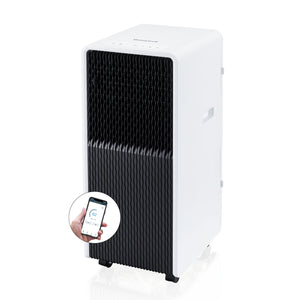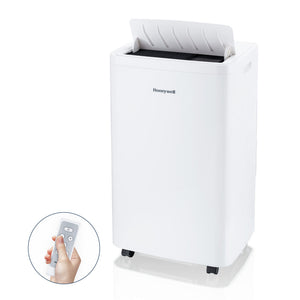
Guide to Preparing your Portable AC for Maximum Efficiency and Longevity
Spring has sprung, which means summer and hot weather is just around the corner. You should prep your cooling solution now to guarantee a safe and comfortable summer. As an added bonus, it might increase your productivity and even help you sleep better!
Portable ACs are a popular cooling solution as they’re cost-efficient and easy to set up; no special tools or heavy lifting required. Plus, they come on wheels, so you can slide the unit from room to room.
We’ve prepared this simple guide to help you maximize the efficiency and cooling power of your portable air conditioner:
Get the Right BTU for your space and family
It might seem a bit obvious, but you need a model designed to work with the square footage you need covered. This is key if you plan to move the portable room AC around your home; different spaces might need a different model of portable AC. Before you go shopping, measure your space(s), so you can buy the perfect match. If you’re not sure, refer to the manufacturer's website.
Please note: environmental factors such as the number of people in the room will affect AC efficiency. The more people, the harder an air conditioner has to work to cool a room. If more people will be home during the day, you might want to consider a model that has more BTU’s than the recommended one for your room size. As a rule of thumb: if the room is regularly occupied by more than two people, you’ll need an additional 1000 BTU's for each person to maintain the same cool temperature.
Location, location, location
Place the portable AC away from any heat source that can skew the AC’s temperature sensor. This includes things you might not have considered like heat-producing kitchen appliances and electronics like big-screen TVs, audio equipment, or computers. Anything that feels warm to the touch should be kept at least 10 feet away.
Also, keep in mind that the design and structure of your room, like ceiling height and the insulation of your doors, windows, and walls, can also affect cooling efficiency.
Keep it shady!
Avoid placing your personal air conditioner in spots that get a ton of hot afternoon sun. Sunlight can really warm up a room and force your portable AC to work extra hard to maintain a cool climate. Over time, this could wear out your unit faster. If you can’t escape the sun, you can cover this by getting a higher BTU unit.
Check the exhaust hose and room insulation
Good hose ventilation and window insulation keeps your personal air conditioner efficient and prevents wear and tear. Double win!
To properly vent, check the hose(s) are connected correctly and positioned as straight as possible to both the back of the unit and the window kit.
Then, check the window connection’s set up correctly. Any open gaps leading to the outside means hot air can seep in and cool air can escape. If you find any cracks or gaps, fill or tape them up with insulation tape. Tape is provided with some Honeywell portable AC models. Otherwise, pick up tape like this from your local hardware store.
Clean the air filter regularly
Most portable ACs are equipped with a washable air filter. Some brands, like Honeywell take it a step further, like this compact Honeywell portable air conditioner which comes with a washable dust filter and filter clean alert to ensure the unit maintains its maximum cooling performance. Filters should be checked and cleaned regularly to maintain air quality. Set a calendar reminder to check your filters per the manufacturer’s guidelines. Refer to your model’s manual if you need the schedule for your unit.
No special air conditioner cleaner is required! The washable filters can be vacuumed or cleaned in warm water with a mild detergent. You may even use an old toothbrush to brush away any stubborn dust. Thoroughly rinse and dry before you insert back into the unit.
Check & drain any collected condensation
Most portable ACs have auto-evaporation systems, but it can still collect condensation, especially if it’s been really humid. Check and drain the condensation entirely before starting up your portable AC again this summer.
And, that’s it!
If you’ve followed these steps, you are primed and ready to keep cool when hot weather takes over! If you want tips and tricks to say cool outdoors, check out this article to learn how a portable air cooler can help!
As a last tip, follow these steps anytime you plan to leave your home for an extended period. Don’t forget to store in a dry location covered with a sheet to prevent dust build-up.






